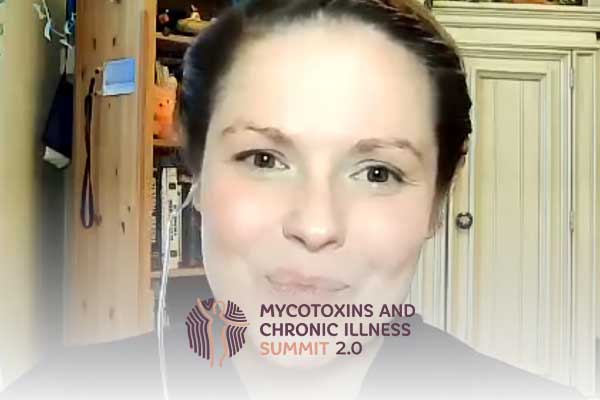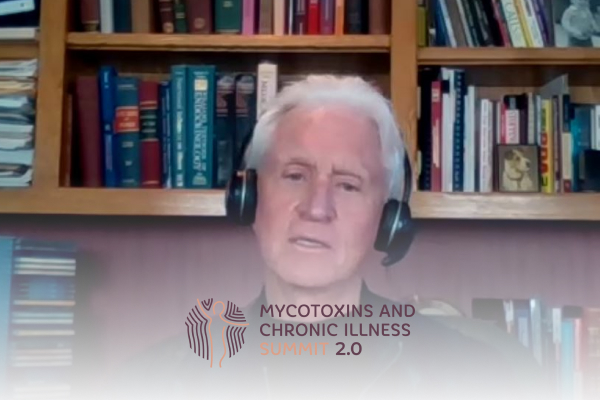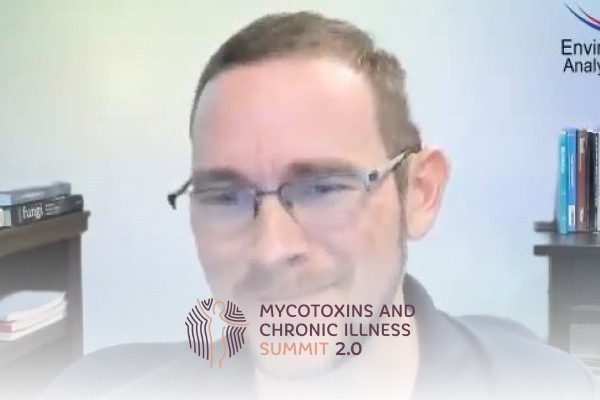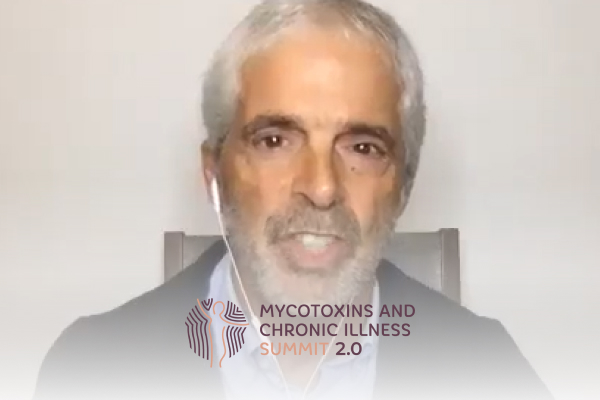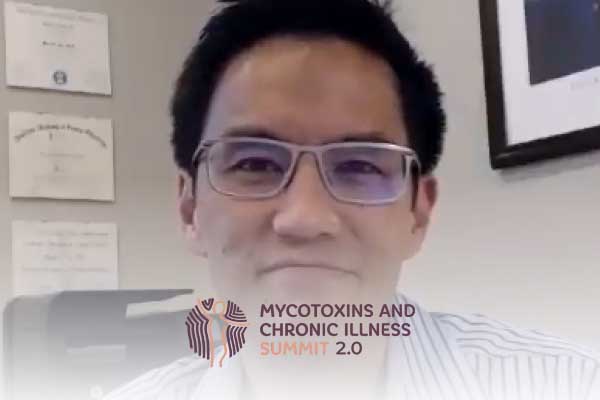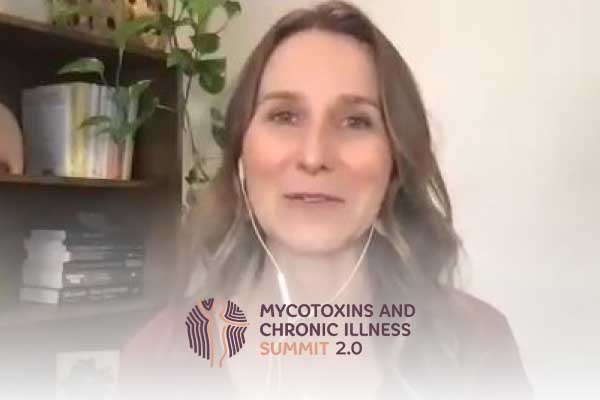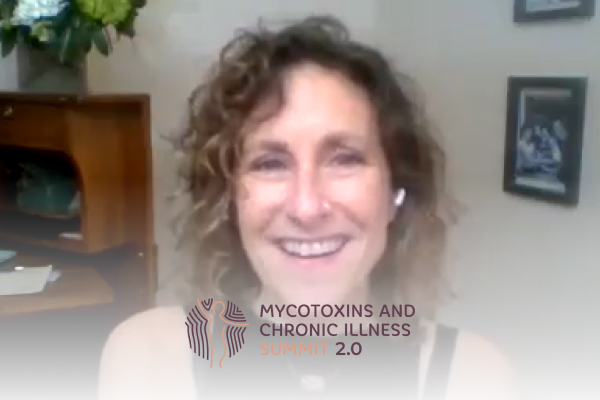Join the discussion below

Nafysa Parpia, ND has an independent practice at Gordon Medical associates, specializing in the treatment of Lyme disease and other complex chronic illnesses such as autoimmunity, mold toxicity, fibromyalgia, environmental toxicity and gastrointestinal disorders. Her patients with chronic Lyme Disease are typically those who either do not do well with antibiotics, or prefer... Read More
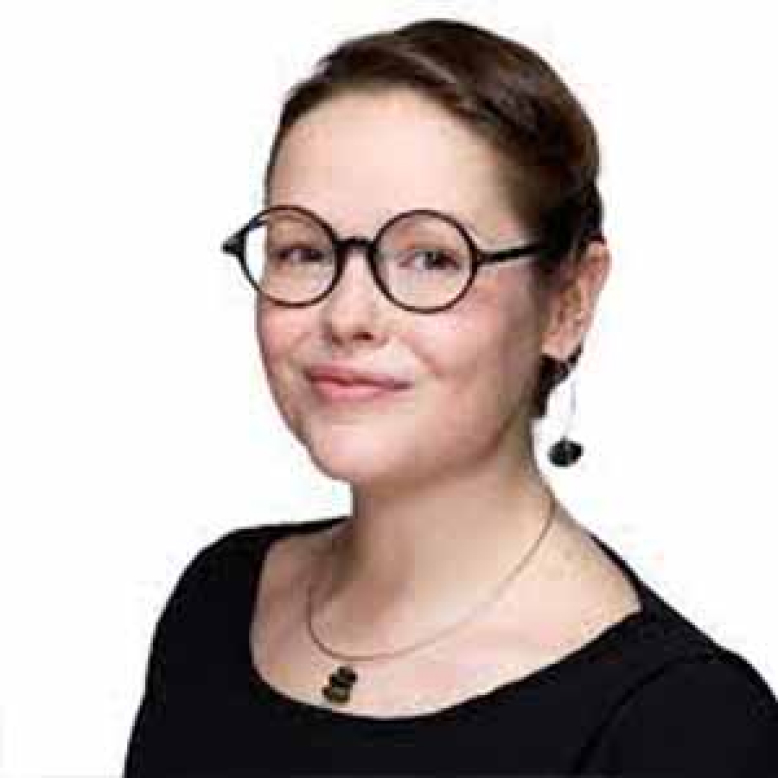
Lauren Tessier, ND, is a practicing Naturopathic Physician licensed by the state of Vermont. Her practice Life After Mold in Waterbury, Vermont is the East Coast’s only formerly certified, CIRS-literate Naturopathic practice. Life After Mold services patients suffering from multi-symptom, multi system illness, complicated by co-morbid conditions such as MCS,... Read More
- The mission of ISEAI
- How ISEAI works to solidify practioners understanding of environmentally acquired illnesses
- ISEAI professional certification process
Nafysa Parpia, N.D.
Welcome to this episode of the, “Mycotoxins And Chronic Illness Summit.” I’m so excited to have with me today, Dr. Lauren Tessier. So we are both involved with ISEAI, the International Society of Environmentally Acquired Illness. Lauren is our President and I sit on the Board of Directors. We have a lot of big news to share with you today about ISEAI. It’s just such an honor to be on ISEAI, Lauren, welcome.
Lauren Tessier, N.D.
Thank you for having me. And of course, thank you for being a part of ISEAI.
Nafysa Parpia, N.D.
Thank you for being here and for being the President of ISEAI. So tell us about ISEAI and what our mission is.
Lauren Tessier, N.D.
Sure, so ISEAI was founded in 2017 in response to the fact that a lot of patients weren’t getting better with some of the treatment protocols that were out there with regards to environmentally acquired illness. And so a group of physicians sat back thought about the fact that, there’s gotta be more than one way to help these folks. And so with that in mind, ISEAI was created and it’s created as an educational nonprofit to help practitioners of all different walks of life, really understand environmentally acquired illness, how to diagnose it and how to treat it. So that’s really, ISEAI’s main mission, is to help as many people as possible in the global populace by really working to solidify practitioners, understanding of this field.
Nafysa Parpia, N.D.
Thank you, Lauren. It’s just so important because we’re finding that patients who have complex chronic illness they very often don’t have an appropriate diagnosis. Maybe they have the wrong diagnosis or no diagnosis at all. Maybe their diagnosis is a waste basket term, like fibromyalgia or chronic fatigue syndrome, which means it’s just a label that we doctors put on you when we don’t know what’s going on. The thing is, it’s very often we can find out what’s going on. And so we run all kinds of labs. We look deep into the biochemistry and we find very often in our patients who have kind of chromic fatigue syndrome, fibromyalgia and other mystery illnesses that there’s a high environmental toxin load, could be the toxins for mold, mycotoxins like we’re talking a lot about at this Conference Day and other toxins as well, metals, chemicals, so this is why we exist, to help shed light on complex chronic illness that isn’t necessarily there.
Lauren Tessier, N.D.
Right. And I think that something else that I’d really love to drive home off this conversation is, it’s not just the oddball, forgive the phrase. It’s not just these oddball chronic illness things that no one can identify like it really getting to the core and the root. We have a lot of ongoing inflammatory illnesses like most, all inflammation, all illnesses come out of some form of inflammation, right?
Nafysa Parpia, N.D.
Right.
Lauren Tessier, N.D.
Your diabetes, your acrosclerosis, et cetera. And so, it’s not just the ones that leave you scratching your head and wondering, it’s really even some of the more simple, straightforward things that primary care providers and the general population are seeing on a day to day basis.
Nafysa Parpia, N.D.
Right, like infertility or obesity.
Lauren Tessier, N.D.
Yeah.
Nafysa Parpia, N.D.
Cardiovascular diseases.
Lauren Tessier, N.D.
Absolutely.
Nafysa Parpia, N.D.
Yeah, so Lauren tell them what’s our big news.
Lauren Tessier, N.D.
Yeah, so I have two pieces of big news and they’re very much correlated with one another. The first piece of big news is ISEAI, after having a little bit of hiatus in the development of our certification process is so pleased to announce that ISEAI is bringing forth our certification process once again. And so a cornerstone to that certification process is attendance to two in person conferences. And for the first time in since 2019, And for the first time in since 2019 So the great news is that people who have been, waiting for this next opportunity, that was really announced in 2019, before everything went crazy, since every waiting for the opportunity for the next in person conference, this is it. And this will go towards that initial certification foundation. So yeah, we’re really excited to announce those two big pieces there.
Nafysa Parpia, N.D.
So Lauren, what are we gonna be training doctors in.
Lauren Tessier, N.D.
Sure. Globally for the certification or for the conference? Which one?
Nafysa Parpia, N.D.
Let’s talk about the certification first.
Lauren Tessier, N.D.
Yeah, so of course we are the International Society for Environmentally Acquired Illness. We are going to be training people on all the things that are environmentally illness related. So we’re going to be talking about mold, heavy metals, toxins, and all the cool morbidities that come along with this, like multiple chemical sensitivity, MCAS, EDI, CCI, all these really wonderful things. And that’s part of, being a part of our conferences is some of this certification process has its foundations laid and what we are teaching in these cutting edge conferences that we are having annually.
Nafysa Parpia, N.D.
I love it. So we’re really educating doctors on how to understand not only everyday illnesses that they see, but also complex chronic illnesses.
Lauren Tessier, N.D.
Yeah, absolutely.
Nafysa Parpia, N.D.
With the new lens, through a lens that’s cutting edge, I would say. Yeah, so–
Lauren Tessier, N.D.
And not just doctors, I gotta throw it out there for the membership. Nurse practitioners, DOs, DCs. We have FDNs, we have everyone a part of this community ’cause it’s so important to get people educated, so we can help as many people as possible.
Nafysa Parpia, N.D.
Fantastic, so for all practitioners.
Lauren Tessier, N.D.
Yes.
Nafysa Parpia, N.D.
We are interested all professionals, that’s great. So let’s talk a little bit about the conference. So our conference is in May.
Lauren Tessier, N.D.
Yes.
Nafysa Parpia, N.D.
And it’s close to Denver.
Lauren Tessier, N.D.
Yes
Nafysa Parpia, N.D.
Yeah, so tell them a little about the conference Lauren.
Lauren Tessier, N.D.
Sure, so the conference is May 19th through the 22nd and we are going to be talking about cultivated resilience. And so I think over the past few years, something that has really been brought forth to our population and everyone is how important resilience is after thing, after thing, after thing, gets delivered to us and in the context of environmental medicine, we can recover people and we can get them to avoid and get their bodies healthy and functioning but how can we support resilience? How can we support people as they move forward through this toxic world? And so we are going to be talking about that of course through the lens of environmental medicine. And again, we’re going to be hitting on topics of mold, lime, heavy metals, persistent toxicants. And then again, we’re going to be talking about EDS, MCAS, CCI, and it’s gonna be phenomenal. And I’m really also excited to be to talking about some of the speakers there today, this time around this year, we’re gonna have some phenomenal speakers for sure.
Nafysa Parpia, N.D.
And who are we having? Who are you excited about?
Lauren Tessier, N.D.
I’m excited about everyone if I’m being honest.
Nafysa Parpia, N.D.
Yeah.
Lauren Tessier, N.D.
But there’s quite a few people who will be speaking that are rarely seen on the lecture circuit. And these are clinicians who are elbow deep in what they do. And so they’re kind of stepping out of the clinical world and stepping onto the stage and sharing their information with us, which is so exciting. So, I like seeing things from a new perspective and kind of picking things apart and finding new and different correlations. And therefore, one of the lectures that I’m really excited about is the dermatology considerations and environmental medicine. And that’s gonna be from Dr. Anne Marie Fine, that should be amazing. I haven’t heard anyone else speak about dermatology in the context of environmental medicine.
Nafysa Parpia, N.D.
Generally I don’t hear people speak on that and we see manifestations of all kinds of dermatological issues in our patients. And it’s really important, I think.
Lauren Tessier, N.D.
Absolutely. And especially if dermatology can act, it’s on the outside, we can see it. There’s a physical, tangible manifestation. I mean, how cool is that to have that awareness? One of the other physicians that I’m excited about is hearing Dr. Werner Vosloo speak. Dr. Werner served on the ISEAI board for quite some time. And while he was on the board, he was really passionate about not only lipid membrane therapy but also about the epigenetics of how toxicants interact with your DNA. So the presentation that he’s giving is actually going to be talking about the epigenetic impact of environmental toxins. And I believe that he’ll even have some information on how we test for it and how we apply it in a clinical setting.
So that’s another one I’m very excited about. And again, it’s so hard to like nitpick on like which ones, everyone’s gonna be amazing. Another one that I’m excited about that really resonates with me and my practice is hearing Dr. Chad Prusmack speaking. He is a board certified neurosurgeon and he speaks with the top of the top when it comes to, he works with some of the highest functioning athletes, like professional athletes. And he does a lot of work around TBI as a neurosurgeon. And however, he’s going to be speaking at our conference about environmental subconcussion. So this like chemical TBI, essentially. So I’m really excited to hear that from, the neurosurgeon perspective.
Nafysa Parpia, N.D.
Right. And that’s super pertinent to the population who’s watching this today. Mycotoxins and chronic illness summit because we see people who have TBI symptoms every day in our practice. Maybe they’ve had a concussion, maybe they haven’t. Either way we’re seeing these symptoms. So speaking of neurosurgeons, we’re also having Dr. Paolo Bolognese, who I’m very excited to hear speak. He is a surgeon who works with patients who have craniocervical instability which is a diagnosis that is becoming, just becoming looked at now, in the world of complex chronic illness. So we haven’t heard Dr. Bolognese speak at any of our, the conferences on our circuits. So the first one will be here, super excited about that.
We have Dr. Alireza Panahpour, who is a systemic dentist, and he’s gonna talk about the role of dental inflammation in chronic illness. Something that is really important because very few doctors are paying attention to the infection in the jaw that can’t be seen on an x-ray but where inflammation can cross the blood brain barrier so easily from these infections. And we are going to hear from Dr. Joseph Smith, he’s a neurological chiropractor and he’s gonna talk about the brain influences on immune function and Dr. Jill Carnahan on interfaces between self and environmental exposures. And Dr. Carnahan is also on our Board of Directors with us. And I’m excited to talk about persistence/persistent viral antigens lessons from COVID long haul.
Lauren Tessier, N.D.
Yes.
Nafysa Parpia, N.D.
Yeah, Lauren, what are you speaking on?
Lauren Tessier, N.D.
I’m speaking about mycotoxins. And I’ll be speaking about the correlation of auto immunity, which I think gets poo-pooed a bit but there’s definitely, I won’t say it’s a causal relationship but it’s certainly a correlation and it doesn’t stop with the names that I’ve mentioned and the names that you’ve mentioned and ourselves, we already have Ann Corson, we’re gonna have Tom Markoff and we’re gonna even have some IEPs, some Indoor Environmental Professionals, J.W. Bavia and Michael Sohn talking about the indoor built environment. So essentially making it a lot of difficult topics for physicians to wrap their head around ’cause we’re not IEPs. We don’t specialize in the indoor built environment.
Nafysa Parpia, N.D.
Right.
Lauren Tessier, N.D.
And really making it applicable. So you can understand when you sit with your patient and you’re going through this, what to consider in their homes. So those themselves are gonna be phenomenal. And I don’t want people to be intimidated by this because this is a really big conference and it’s gonna have a lot of juicy information but if you are new to this field, you’re not, we do offer a pre-conference in all of this. And our pre-conference is, it’s specifically met for folks who are kind of new to this world and that will be happening on Thursday the 19th, but even for people who need refreshers or kind of just wanna get their feet wet again, or see what’s up to date in the basics, the pre-conference is totally for them. And so I’m super excited to also see that some of our phenomenal board members will also be speaking there.
Kelly Milani, Mark Su, Kelly McCann, you of course, Laura Adler, we’re going to be hitting kind of the basics the one oh ones of mold, viral infections, toxicants, the indoor built environment. And one of, I think the highlights of the pre-conference is that our Vice President, Mark Su has been working very hard on putting together this foundational framework of the lens of what you can look through when you’re thinking about environmental medicine because there’s so many moving parts. And if we can kind of pull things in and simplify them so that the bigger picture is really understood, it really gives us a clinical context for all of this. So Mark Su is going to be covering that at the pre-conference. And so, I mean, I’m excited to be at the pre-conference.
Nafysa Parpia, N.D.
I’m so excited too. It’s gonna be such a great conference. I mean, just talking about this, it’s exciting me even more than it already was. It’s gonna be so good.
Lauren Tessier, N.D.
It’s gonna be wonderful. And then we’re gonna have great food and we have an amazing community of practitioners here. One of the other reasons why ISEAI was founded was, the founding physicians did not ever want other people to go through what they went through, learning and isolation and kind of having the concept of having to visit Oz, to have knowledge be released upon you. That’s not–
Nafysa Parpia, N.D.
I mean, what we had to do when we graduated from Bastyr.
Lauren Tessier, N.D.
Yeah.
Nafysa Parpia, N.D.
We had mentors, amazing mentors and the knowledge was absolutely released upon us like a dam, right? Like overflowing and it’s amazing but I wish I had conferences like this at the time. It would’ve just made things go faster.
Lauren Tessier, N.D.
Yes, absolutely. So, we were gonna have great topics, great food, great community, great location. And it also, again lays the foundation to get that first step in your certification to be a part of ISEAI being certified. So we’re super excited about it. And for folks who are watching this particular summit, we’re offering a promo code for a hundred dollars off the in person admission for ISEAI. And so that promo code is GMA100. So G as in Gary, M as in Mary, A as in apple GMA100 and that can be applied to your conference tickets if you head over to iseai.org and hit the conference tab, you’ll find everything that you need all about our conference there.
Nafysa Parpia, N.D.
Thank you Lauren.
Lauren Tessier, N.D.
Absolutely. Thank you so much for letting me chat with you. Hopefully we can bring more warm, happy, kind loving people into ISEAI and hopefully we can just help to spread the good news about environmental medicine and make a difference in as many people’s lives as possible. So thank you for having me on, thank you for having me be a part of this, second part to this phenomenal summit. And I appreciate all the hard work that you do for our community.
Downloads

